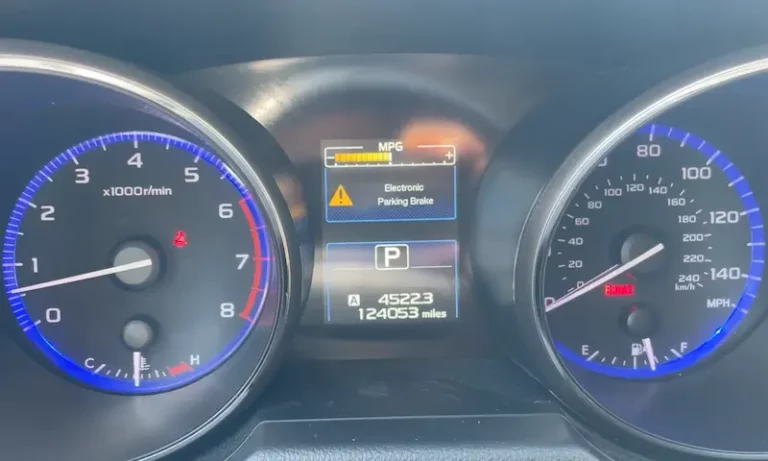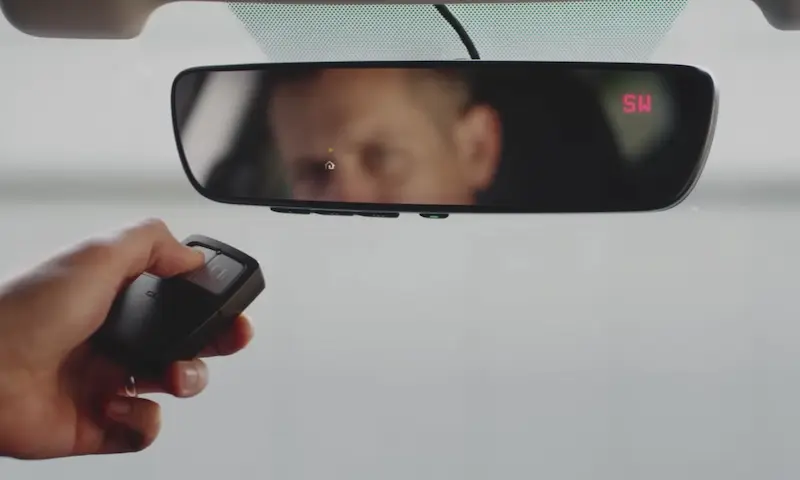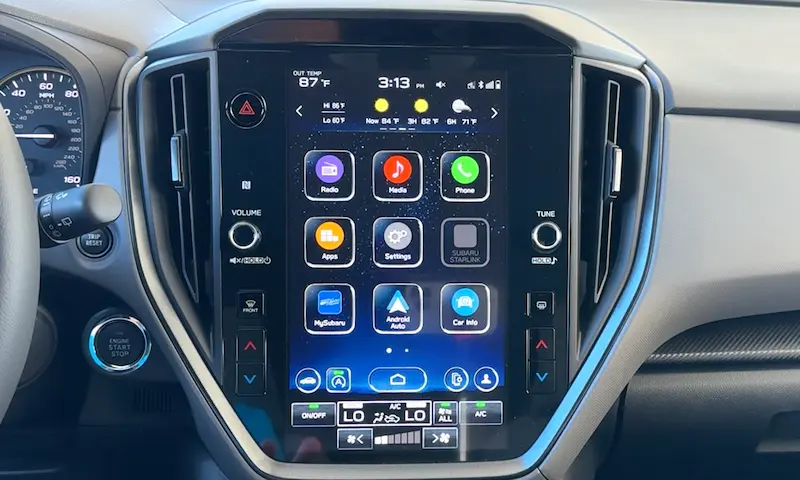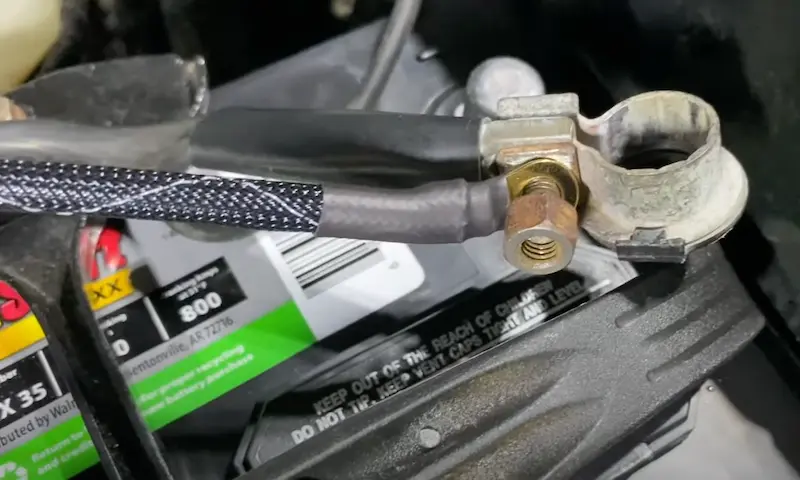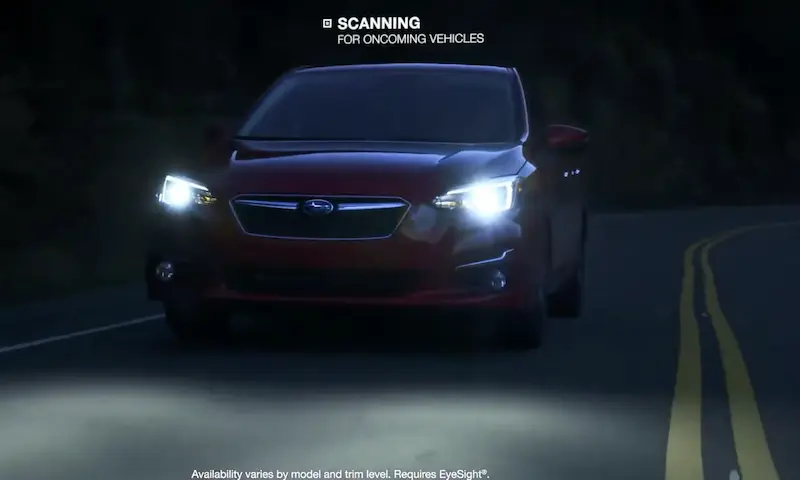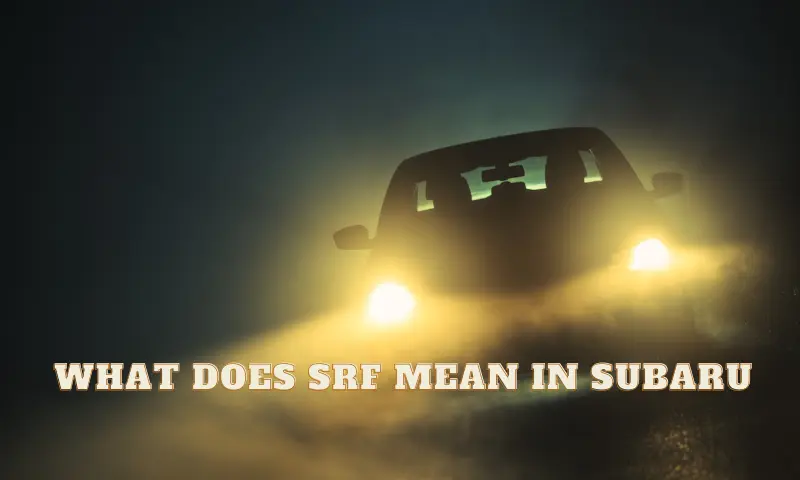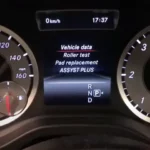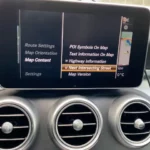Dealing with a Subaru electronic parking brake issue can be a bit tricky, but don’t worry, you’re not alone. The electronic parking brake system is a convenient feature in Subaru vehicles, but sometimes you might experience problems or need to reset it for maintenance.
In this article, we’ll discuss how to reset the Subaru electronic parking brake and address common issues you may encounter. By the end of this guide, you’ll be more knowledgeable and confident in handling electronic parking brake troubleshooting in your trusted Subaru.
The Working Principle of Electronic Parking Brake
Imagine you’re driving your Subaru: the electronic parking brake (EPB) offers an extra layer of security and safety. To help you understand the EPB better, let’s dive into the working principle of this impressive system.
When you engage your Subaru’s EPB, an electronic module sends a signal to a motor in the rear calipers. The motor then spins the force sensor, which pushes the piston out and squeezes the brake pads onto the brake disc. This holds the wheels securely, preventing your car from rolling away when parked.
Now, let’s say you’re ready to drive again. When you disengage the EPB, the motor spins in the opposite direction, retracting the piston and releasing the brake pads. The force sensor ensures the correct amount of force is applied, guaranteeing your car stays secure.
Here’s a simplified overview of how it works:
- Engage EPB: motor extends piston, brake pads squeeze disc
- Disengage EPB: motor retracts piston, brake pads release disc
Proper calibration is essential for the EPB system to function correctly. Thankfully, your Subaru will automatically calibrate the parking brake when needed, like after replacing brake pads or working on the brake system. However, if you encounter any issues, such as the EPB not disengaging, it’s crucial to consult your trusted mechanic or Subaru dealer.
Issues with Subaru’s Electronic Parking Brake
Warning Light Indications
The warning light is an essential component when it comes down to identifying any issues with your Subaru’s electronic parking brake. When the Subaru electronic parking brake warning light comes on, it indicates that there might be a problem with your vehicle’s brake system. The issue may be caused by a loose wire harness connection to the electronic parking brake connector, likely due to worn-out plastic.
Complications with Brake Pads and Rotors
One common issue with Subaru’s electronic parking brake is brake pads grinding. This problem occurs when your brake pads wear down, causing the metal core to be exposed and grinding against the brake rotors. Warped brake rotors can also contribute to issues with the parking brake, as they may cause uneven force distribution during braking. Ensuring your brake pads and rotors are in good condition will help avoid these problems.
Caliper Piston Drags
Another issue related to Subaru’s electronic parking brake is the brake caliper dragging. This happens when the caliper piston does not fully retract, causing excessive wear on the brake pads and rotor. To address this issue, you might need to inspect and replace your caliper pistons or lubricate the caliper sliding pins properly.
Brake Booster/Master Cylinder Failure
The brake booster and master cylinder play a critical role in the operation of your vehicle’s brake system, and their failure can cause issues with Subaru’s electronic parking brake. If your car’s brake pedal feels spongy or requires excessive force to engage, it could be a sign that the brake booster or master cylinder is failing. In such a situation, consult a mechanic to diagnose and rectify any issues with your vehicle’s braking components.
Tainted Brake Fluid
Your vehicle’s brake fluid is essential for maintaining optimal performance of the brake system. However, if the brake fluid becomes tainted, it can cause the electronic parking brake to malfunction. To prevent this issue, it’s crucial to flush and replace your brake fluid regularly according to your vehicle manufacturer’s recommendations.
How to Fix Subaru Electronic Parking Brake Problems
When you encounter issues with your Subaru’s electronic parking brake (EPB), it helps to know how to diagnose and fix the problem. Here’s a friendly guide to help you through the process.
First, you’ll want to find out if there’s an issue with your EPB. To do this, turn on your car and apply the handbrake. If you notice the EPB light is blinking or not turning off, there might be a problem. To further investigate, you can use an appropriate scanner, such as the Subaru Select Monitor or Select III Subaru Scanner, to read any trouble codes.
Once you’ve retrieved the relevant codes, it’ll be easier to pinpoint the problem. Common issues may include a malfunctioning brake pedal switch, a blown fuse, or a problem with the EPB adjuster.
If you find that your Subaru Outback parking brake will not disengage, first check if the brake pedal switch is working correctly. You can do this by pressing the brake pedal and checking if the brake lights turn on. If they don’t, replace the brake pedal switch.
Should you come across a stuck EPB on a Subaru Legacy, check if there’s a problem with the ATE (Automatic Test Equipment). The ATE ensures that the EPB actuator assembly performs an automatic calibration when turning the ignition on. If the ATE is faulty, consider replacing the entire EPB actuator assembly.
In case the issue persists, you can try a reset to fix your EPB. Switch off the engine, and then remove the parking brake fuse from your vehicle’s fuse box. Start the engine, and then wait for a few seconds before replacing the fuse. After turning off the engine again, wait for around 30 seconds before starting your car. Apply and release the handbrake a few times to see if it now responds correctly.
Remember to always address EPB issues promptly to ensure optimal safety and performance. If you’re not confident in diagnosing and fixing your Subaru’s electronic parking brake problems yourself, consult a professional mechanic to get the job done right.
Recalls and Issues Specific to Subaru Models
Subaru Outback
The Subaru Outback has experienced some issues related to the electronic parking brake system. Some owners have reported that the Subaru electronic parking brake warning light may come on, which could indicate a problem with the parking brake. In some cases, the Subaru Outback parking brake will not disengage properly, which can be a significant concern for drivers.
In response to these issues, there has been a recall affecting 2010-2014 Subaru Outback models with manual transmissions. If your Subaru Outback is affected by this recall, it’s essential to have the issue addressed by a qualified technician as soon as possible.
Subaru Legacy
Similar to the Outback, the Subaru Legacy has also faced issues with its electronic parking brake system, leading to a recall for certain 2010-2014 Legacy models with manual transmissions. The electronic parking brake may fail, increasing the risk of a vehicle rollaway and potential accidents.
If you are a Legacy owner, it is crucial to check whether your car is included in this recall and have the problem resolved promptly by a professional technician.
Right-Hand Drive Models
For Subaru owners in countries like Australia, where right-hand drive models are prevalent, the electronic parking brake issues mentioned above may still be applicable. Although specific information on right-hand drive recalls is not readily available, it is essential for owners to be aware of potential problems with their vehicle’s electronic parking brake system.
Conclusion
In the end, resetting your Subaru’s electronic parking brake can be accomplished using a diagnostic tool. Just follow the proper procedure, and you’ll be good to go. Always ensure that you use a reliable source for guidance and stay up-to-date on any software updates required for a smooth experience with your car’s electronic systems. Happy driving!

